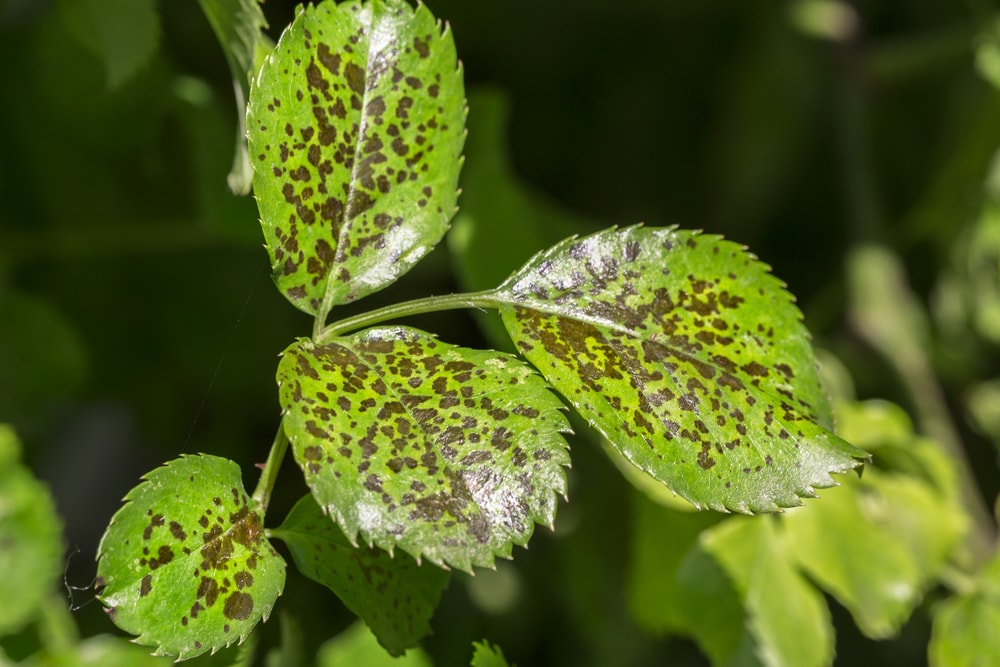Spots On Holly Leaves Small to large irregularly shaped yellow brown spots appear during the winter and spring on old American holly leaves infected with Coniothyrium ilicinum Heavily infected leaves drop prematurely from the trees in the spring Phacidium species initially causes yellow spots on the leaves of American and English holly by late spring
Tar Spot This disease is caused by the fungus Macroderma curtisii formerly named Phacidium curtisii and Rhytisma curtisii Yellow spots appear on the leaves of American and English hollies in May These turn reddish brown and finally black by fall Purple Blotch With purple blotch leaves of holly become splotched with purple looking spots which are usually brought on by drought plant injury or nutritional deficiencies Spine Spot Spine spot is similar with gray spots edged with purple This is most often caused by leaf punctures from other leaves
Spots On Holly Leaves
 Spots On Holly Leaves
Spots On Holly Leaves
https://www.gardenbanter.co.uk/attachments/united-kingdom/13592d1298973278-spots-holly-leaves-picture-061.jpg
Holly plants are popular for their attractive foliage but when brown spots start to appear on their leaves it can be a cause for concern Brown spots on holly leaves are a common problem that can be caused by several factors including fungal infections insect infestations environmental stress and improper care
Pre-crafted templates use a time-saving solution for developing a diverse variety of files and files. These pre-designed formats and designs can be utilized for different personal and expert jobs, consisting of resumes, invites, leaflets, newsletters, reports, discussions, and more, enhancing the material production process.
Spots On Holly Leaves

Holly Yellowing Leaves With Spots BBC Gardeners World Magazine

Holly Bush Problems Pests And Diseases Of Holly Shrubs
Help With A Dying Holly Tree 175214 Ask Extension

Holly Yellowing Leaves With Spots BBC Gardeners World Magazine

Large Holly Tree Dropping Yellow Leaves BBC Gardeners World Magazine
Holly Spots 563272 Ask Extension

https://handsongardening.com/dying-holly-trees-diagnose-revive/
They re prone to leaf discoloration and spotting can grow poorly and even defoliate completely and it can be hard to tell what s going on Holly trees that are sick dying or stressed will display excessive numbers of yellow leaves and undergo leaf drop Typically this results from drought poor drainage excessive shade or iron deficiency

https://todayshomeowner.com/lawn-garden/guides/how-to-prevent-holly-leaf-spot/
Follow these steps to treat and prevent fungal leaf spot on holly Pruning If your holly is really dense prune and thin out some branches to increase air circulation and to allow sunlight to penetrate the plant Carissa holly Watering Water your hollies before noon so that the leaves have a chance to dry off during the day
https://www.gardeningknowhow.com/ornamental/shrubs/holly/white-spots-on-holly-plants.htm
White spots on holly leaves can almost always be chalked up to one of two things scale or mites Both are tiny pests that stab into the leaves of the plant and suck out its juices If you have a scale infestation the white spots will be slightly raised and conical in shape this is the shell that protects the tiny creature underneath

https://blog.irontreeservice.com/tree-diseases-holly-leaf-spot/
Holly leaf spot also referred to as holly tar spot is a fungal disease that affects holly plants Holly tar spot induces the formation of black spots on the leaves of holly Severe infections often result in extensive defoliation of the host plant Hosts Leaf spot diseases are most common on American holly and holly bush

https://extension.psu.edu/holly-diseases
November 20 2023 Skip to the end of the images gallery Skip to the beginning of the images gallery Thielaviopsis spores Holly dieback due to Phytophthora root rot in a root cell Disease Symptoms Pathogen Cause Management Leaf scorch Circular to irregular tan spots appear in early spring or summer
A holly leaf s upper surface is characterized by a shade of green that remains consistent throughout the year Compared to the upper side the lower surface appears lighter in shade Depending on the species and environmental factors though slight variations in color may occur Expert Response This looks like Cottony camellia scale Pulvinaria floccifera a sucking insect It exudes a honeydew as it feeds which fosters the growth of a black sooty mold It is showing up in landscapes in many parts of Maryland this year
Sooty mold a disease caused by the Capnodium fungus looks like a black powdery layer of soot on holly leaves and berries The fungus grows on honeydew a sweet sticky substance excreted by soft scale insects after feeding on plant sap Although the blackened foliage might look unattractive the fungus doesn t directly attack the holly itself